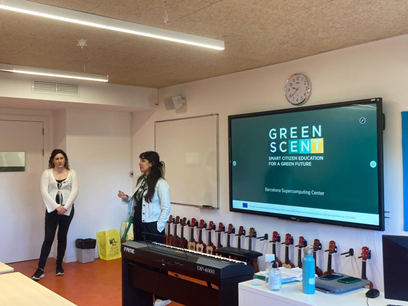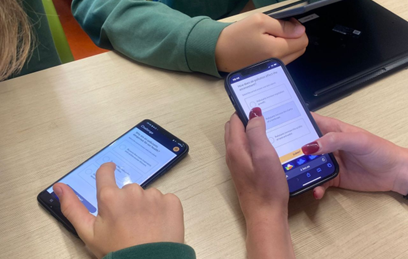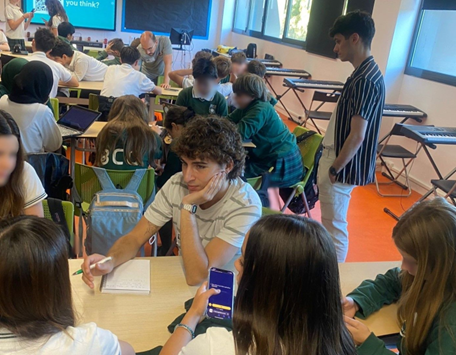Students Put GreenSCENT’s Air Quality App to the Test
Diana Urquiza and Andria Nicodemou (Barcelona Supercomputing Center) – 15th of July 2024

The air we breathe is important for our health. Pollutants are released in the air by many different sources, some linked to human activities like transportation, factories, power stations, homes and farming, while others come from natural sources like deserts and volcanoes. Given the risks associated with air pollution, it is important to better understand the concept of air quality and how to determine when the conditions can have detrimental effects for our health, as well as to learn about small actions we can take to protect ourselves and the environment.
As part of the GreenSCENT project, researchers and user experience experts at the Barcelona Supercomputing Center (BSC) have developed the GreenAIR app, an educational web-based tool that aims to teach students the basic concepts of air quality in a simple, fun and interactive manner. Targeted at students aged 10 to 15 years, as well as their families, teachers, and citizens, the app features several lessons, some with augmented reality (AR) features that allow exploring past air quality data over Europe and the city of Barcelona.
After 2 years of design and development, GreenAIR is now live, and being tested at the schools in the consortium and beyond. As part of this user testing, the BSC team has recently conducted a session at an international school based in Gavá, Spain, which took place in May 2024. At the session, 40 eager students, ages 10 to 15, volunteered to participate in this hands-on activity that allowed them to test the app, putting it through its paces in a real classroom setting.
The students explored the lessons and challenges in small groups, with the help of BSC team members and teachers. The time they spent in each lesson and how difficult they found it to be depended on the age group, since students from late primary to mid-secondary took part in the activity.

The feedback given at the end of the activity was overwhelmingly positive, as students found the app to be engaging and informative. They particularly enjoyed the interactive lessons and challenges that helped them grasp air quality concepts. A big hit were the AR maps featured in Lessons 7 and 8, sparking excitement and demonstrably bringing air quality learning to life. Another attractive feature for the students was the app’s avatar, a bird that accompanies the user throughout the lessons.

Overall, feedback from this session is helping the team refine the app and make improvements to meet the needs of all students. This project underscores the importance of involving young people and other intended users in the development of educational tools. By listening to their voices, the team can create even more effective and engaging educational tools.
Now, the BSC team is more motivated than ever to continue refining the app, aiming to educate students about air quality and empower them to become air quality champions!
